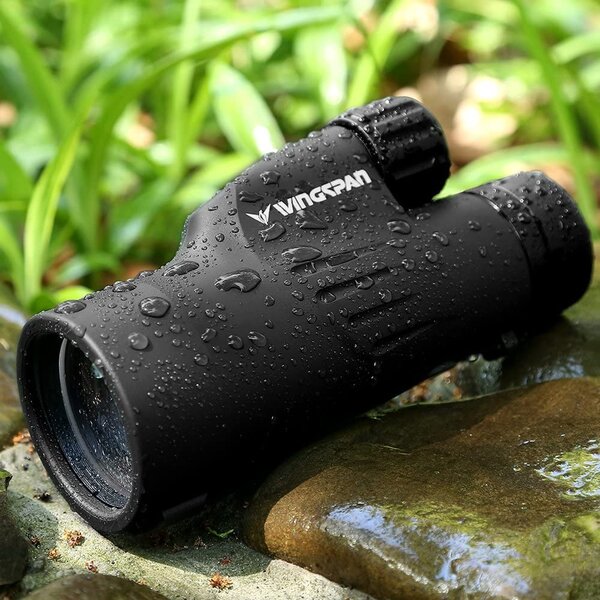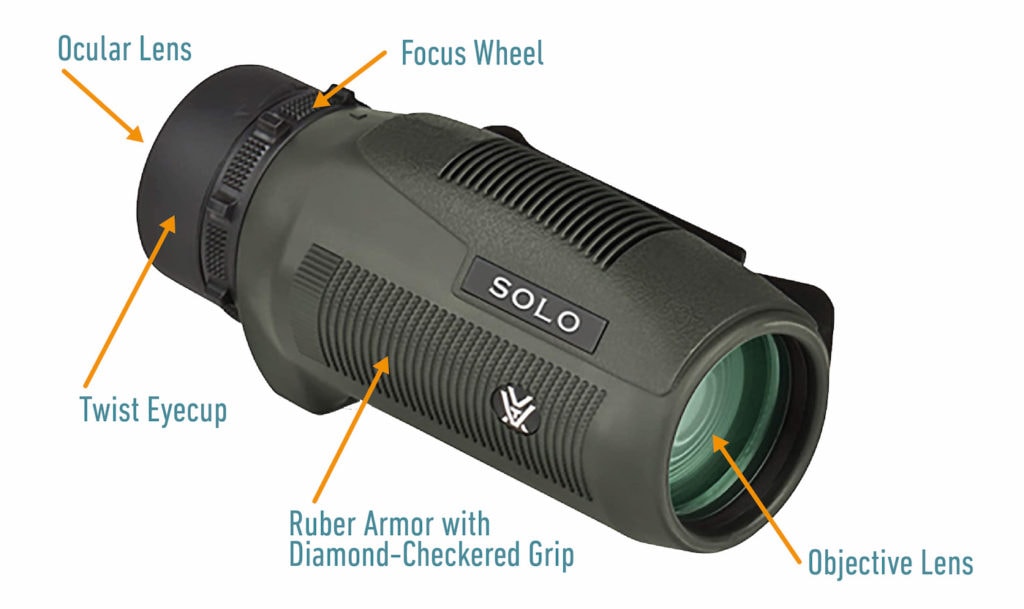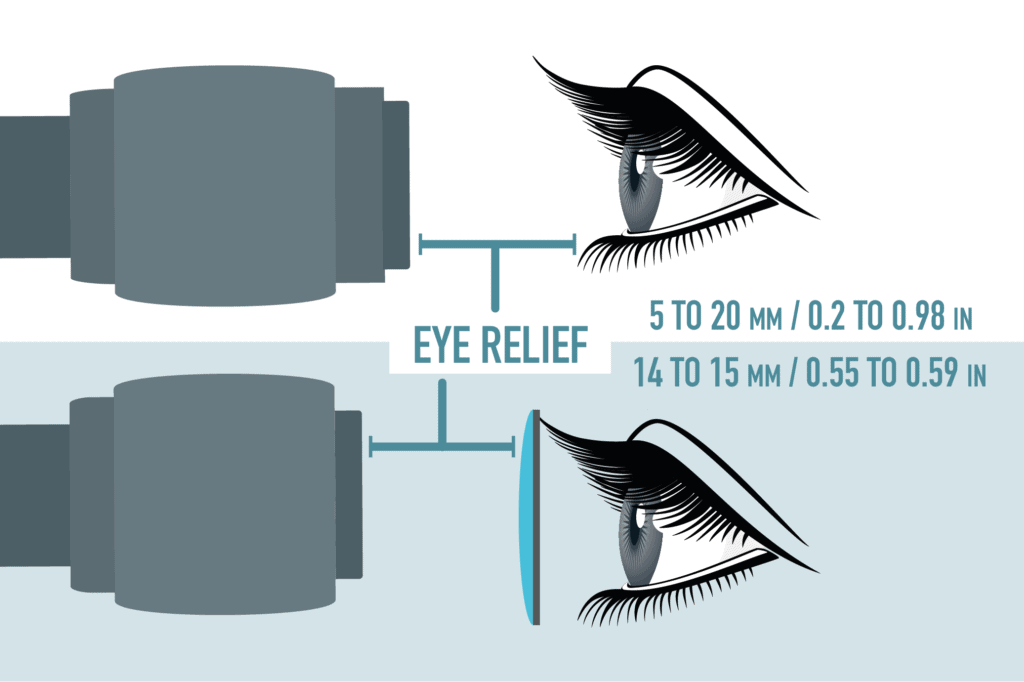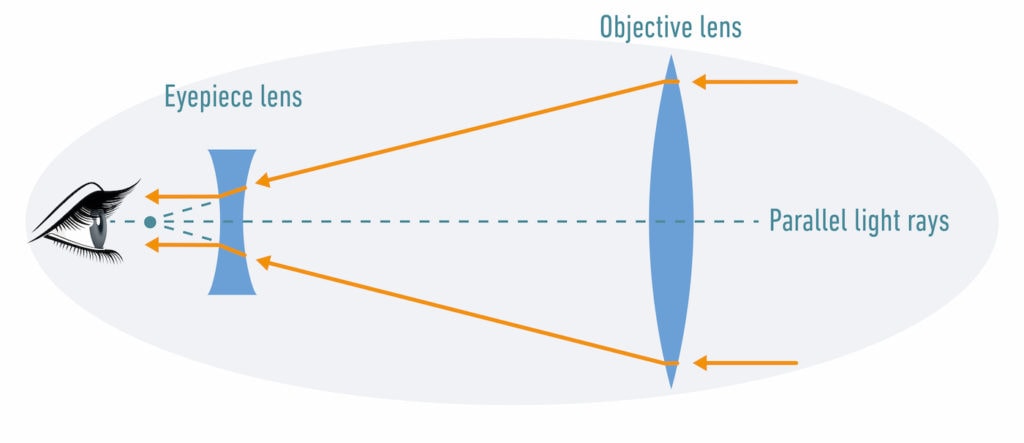How to Choose a Monocular You’ll Love
Last Updated on

Tired of big, bulky binos that easily bump around and break? You might want to consider purchasing a monocular.
Monoculars can provide you an excellent enhanced viewing experience just like binoculars. And it might actually be the better tool for the job in some situations. But what exactly is a monocular? And why should you choose one?
In this article, we’ll explore why you should choose a monocular, how they work, the best uses for having one, and how affordable they can be. Let’s get started!
Why Choose a Monocular?
With all the different bino choices (and even spotting scopes) available, why would you even consider shopping for a monocular? Two tubes are better than one, right?
Not always.
Binoculars and spotting scopes are expensive high-powered devices that allow you to really get up close and personal. But there are times when you don’t need that much magnification power or need a free eye to easily track down your target. And that’s where a monocular comes into play.
Monoculars are also super handy based on how they are designed. They’re half the size of a pair of binoculars and can easily fit into a pocket, purse, or glove compartment. Not to mention, they’re so much lighter. This makes them much more comfortable to wear hung from a shoulder strap or around your neck for extended periods of time.
So, if you need larger magnification powers or intend to actually use your glass for longer periods, binos might be your best option. But if you need to spot quickly or if you’ll be toting them around, you may want to consider a monocular.

What to Look for in a Monocular
Just like any other optic, monoculars come in different magnification powers and sizes. And you’ll usually find this information directly printed on the optic itself. These numbers provide the exact same information as those found on the side of binoculars. So, when determining the best monocular for you, take into account four different factors in order to get the right match.
1. Magnification
As with most optics, you’ll see a set of numbers on your monocular that designate its magnification strength, such as 8×25. The first number means you’ll achieve 8 times magnification; the second number means your objective lens is 25mm in diameter. Remember that more magnification isn’t always better. It will narrow your field of view and can make your image shakier.
On the other hand, larger lenses are most beneficial in low light scenarios, as they gather more light into your device. Because a monocular contains a single light path through its objective lens, it does limit image depth to a 2-dimensional field. But with the bright image quality, you can expect from a monocular, this usually isn’t a problem. Treated roof prisms and multi-coated objective lenses will also add to your image quality, so check the specifications on your model before you purchase.
It’s important to know just how much you’re going to want your objective target magnified. However, extremely high-powered monoculars might not be best for those on the go. That’s because the higher the magnification power, the more your vision will be impaired by the movement of the monocular. Even the slightest shake or twinge at high powers will cause shakiness or loss of target.
2. Lens & Prism Setup
Like binos, monoculars can have either Porro or Roof prisms. Those that come with Porro prisms will have better 3D sharpness at a reduced cost. Roof prisms will provide a brighter color image clarity but are more expensive. Also, you should pay attention to the lens coating that the manufacturer uses. Better quality coatings will produce better quality images. However, you’ll have to pay more for this premium option.

3. Eyepiece (Eye Relief)
Another thing you’ll need to definitely consider is the eyepiece itself. It’s not just a matter of putting it up to your face and seeing it if fits either. You’ll need to take into consideration the eye relief. This is a measure of how far away your eye can be from the lens in order for you to see properly. Now, this normally isn’t an issue, unless you’re wearing corrective lenses, that is. Then, you’ll need to find a monocular with a larger eye relief.

4. Close Focus Range
This range of a monocular is a measure of the closest distance a monocular needs to be in focus. Normally, the higher the magnification power, the more distance is needed to start acquiring a clear focus. For example, a 20x magnification power may need a 20-foot lead in order to start acquiring a good focus, whereas an 8x magnification monocular may only need 24 inches.

Monoculars for Night Vision
Have you ever thought about using night vision optics? Using a monocular is an easy and cheap way to start. They’re also one of the absolute best options as well.
When using night vision goggles or binos, both of your eyes are looking through specially designed lenses to receive an illuminated image of your target. And when you pull away from the eyepieces, both of your eyes now have to readjust to gain their natural night vision.
However, with a monocular, there isn’t that issue. Since only one eye will be exposed to the night vision tech, only that eye will need to readjust, meaning you’ll have a quicker natural field of vision.

Best Uses for a Monocular
There are a bunch of great uses for monoculars. Here are a few of our favorites:
Hiking
Going hiking is a perfect way for a monocular to show off its benefits. The lightweight, compact nature of the optic makes it great when stowing along in a trail bag.

Birding
Birding is another great time to use a monocular. And that’s because it’s easier to find and acquire your target for quick spotting, not to mention that the focusing of the device is so much faster as well. It’s much easier to dial in one set of lenses than two.

Hunting
It’s great to have a monocular when hunting. Monoculars are much easier to carry out into wooded areas and acquire a target when out in the thick brush. Also, if you plan on doing any nighttime hunting for hog, vermin, or coyotes, you might want night vision. And night vision is awesome with monoculars.
Sporting Events and Concerts
If you’re sitting up in the nosebleeds, you’re probably not going to be able to properly see the action without a good pair of optics. But lugging around a set of binos can be pretty heavy throughout. And if you’re at a rowdy concert, you’ll probably want to be extra careful with your bino set as they tend to be much more expensive than a monocular.

Pros & Cons of a Monocular
- Lighter weight
- Less bulky
- More portable
- Great for night vision
- Allows for faster spotting
- Come in different lenses, prisms, coatings, and sizes
- More eye fatigue with extended use
- Narrower field of view
- Less spatial 3D imagery than binoculars

How Much Do Monoculars Cost?
Depending on the prism options, coatings, and overall quality of your monocular, the price can range from relatively cheap to somewhat expensive. However, a monocular with all the same qualifications as a binocular sets will normally be much cheaper and around half the price.

Conclusion
Monocular can be some pretty awesome optics depending on the situation. They offer quick spotting capabilities, unparalleled portability, and even better night vision abilities. Plus, they’re a whole lot cheaper than a standard set of binos.
Just be sure to remember the criteria to follow when choosing one. And you’ll soon fall in love with your next optic — a monocular.
About the Author Robert Sparks
Robert’s obsession with all things optical started early in life, when his optician father would bring home prototypes for Robert to play with. Nowadays, Robert is dedicated to helping others find the right optics for their needs. His hobbies include astronomy, astrophysics, and model building. Originally from Newark, NJ, he resides in Santa Fe, New Mexico, where the nighttime skies are filled with glittering stars.
Related Articles:
Can You Use Binoculars to Look At Stars? How to Choose the Right Pair
How to Choose Binoculars for Bird Watching: 10 Expert Tips
How to Clean a Refractor Telescope: Step-by-Step Guide
How to Clean a Telescope Eyepiece: Step-by-Step Guide
How to Clean a Rifle Scope: 8 Expert Tips
Monocular vs Telescope: Differences Explained (With Pictures)
What Is a Monocular Used For? 8 Common Functions
How to Clean a Telescope Mirror: 8 Expert Tips


